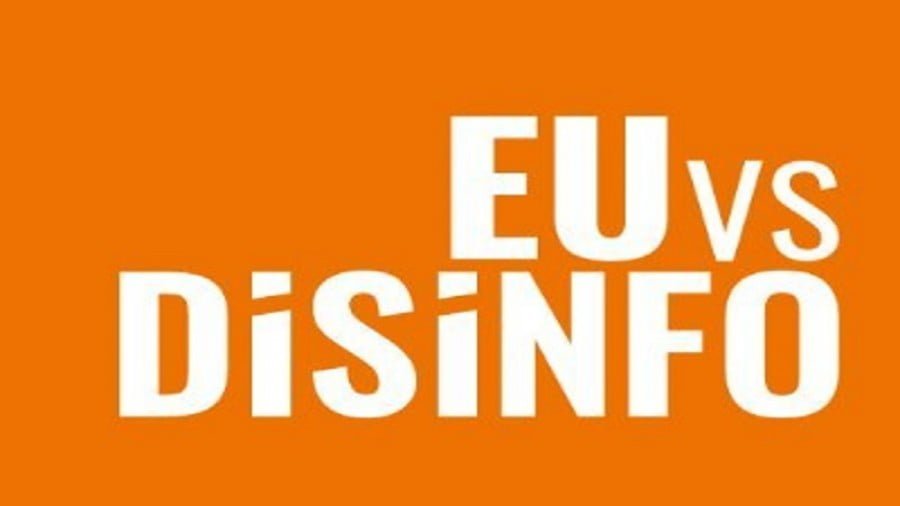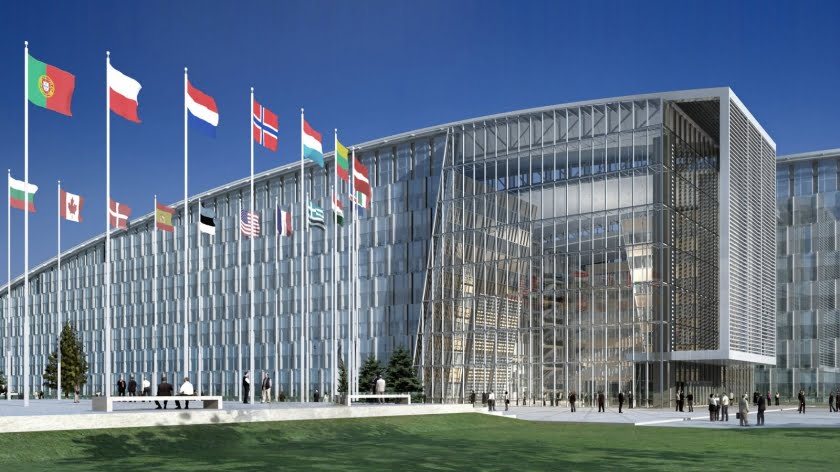The EU’s Infowar Outlet Inadvertently Debunked Its Most Important Propaganda Point
“EU vs. Disinfo”, which functions as the infowar outlet of the European External Action Service’s (EEAS) East Stratcom Task Force, inadvertently debunked its most important propaganda point about Russia by drawing attention to the fact that publicly financed RT’s Editor-In-Chief Margarita Simonyan has the professional freedom to voice views that differ from the Kremlin’s official ones.
Genuine instances of disinformation have become a scourge across cyberspace in recent years, giving way to efforts to debunk such instances of manipulative information. The latest twist in disinformation, however, is that some fact-checkers are actually engaged in the same practice that they claim to be fighting against. A perfect example of this in practice is “EU vs. Disinfo”, which is described on its website as “the flagship project of the European External Action Service’s East Stratcom Task Force”. The European External Action Service (EEAS) in turn describes itself on its official site as “the EU’s diplomatic service”.
Although “EU vs. Disinfo” has a disclaimer that its publications “do not represent an official EU position”, credible suspicions surround that spurious claim since its materials were cited in last December’s “European Democracy Action Plan” against “disinformation”. The document itself defines that concept as “false or misleading content that is spread with an intention to deceive or secure economic or political gain and which may cause public harm”. Since that publicly funded project’s alleged findings have been used to formulate the bloc’s official policy, it follows that it de facto functions as an instrument of the EU’s diplomatic service.
This means that the site isn’t being sincere when it writes in its disclaimer that its work “does not necessarily imply, however, that a given outlet is linked to the Kremlin or editorially pro-Kremlin, or that it has intentionally sought to disinform.” It reality, the opposite is true, even if it usually takes some time for its financial patron to officially support the narrative that its proxy propagates. This means that “EU vs. Disinfo” operates in a very deceptive way, especially since it actually wages information warfare under the cover of claiming to debunk Russia’s. It sometimes backfires, however, as will now be explained concerning one of their latest publications.
The outlet published a piece titled “The Kremlin Snubs Its Own Mouth Piece” on 3 February which pushes the point that publicly financed RT’s Editor-In-Chief Margarita Simonyan is a “loose cannon” after recently sharing her personal views that strongly implied that Russia should incorporate Ukraine’s Donbas region. The presupposition necessary for understanding the reason why that piece was even written is that “EU vs. Disinfo” believes that every person and outlet allegedly connected directly or indirectly to any source of public funding, irrespective of when this supposedly happened, is automatically a mouthpiece for the Kremlin’s official policies.
Since Mrs. Simonyan is the face of Russia’s publicly financed international media, “EU vs. Disinfo” took for granted that its readers were already familiar with their narrative that she’s nothing but a puppet. When she discredited their false presuppositions, the outlet scrambled to save face and defend its information warfare narrative, which is extremely important for them since it’s the basis for their operations. Without believing that everyone allegedly connected directly or indirectly to any source of Russian public funding is a Kremlin mouthpiece, their work supposedly “debunking” their so-called “disinformation” becomes meaningless.
For that reason, they attempted to manufacture the perception that she’s become a “loose cannon”, implying that she’s going rogue by defying her paymaster. The purpose in pretending that this is the case, as was explained, is to defend “EU vs. Disinfo’s” raison d’être, which relies on the false presupposition that was described. If their readers realized that not everyone who’s allegedly connected directly or indirectly to public financing is a Kremlin mouthpiece, they might soon lose interest in the outlet’s supposed “debunking” of what they imply is a concerted and far-reaching Russian “disinformation” conspiracy against the world.
By doing so, however, “EU vs. Disinfo” actually debunked its most important propaganda point: that those who are allegedly connected directly or indirectly to Russian public funding are Kremlin puppets. Despite being the poster child of Russian publicly financed international media, Mrs. Simonyan still has the professional freedom to voice views that differ from the Kremlin’s official ones. Faced with this reality check which debunks everything that they themselves dishonestly claim to “debunk”, “EU vs. Disinfo” should have just ignored it and moved on instead of inadvertently raising awareness about this with their audience.
It’s unclear why they made such an epic blunder by popularizing this “politically inconvenient” fact which draws into question their raison d’être, but one of two explanations is the most likely. The first is that they were ordered to do this by their EU paymasters out of the mistaken expectation that this information warfare attack would improve, not erode, their credibility. That, however, would strongly imply that they’re misleading their audience in their disclaimer by making it seem like they’re only independent fact-checkers and aren’t under state control despite being publicly financed. In other words, they’d be exactly what they accuse RT of being.
The only plausible explanation is that “EU vs. Disinfo” is actually what RT itself really is, and that’s a publicly financed information outlet that’s editorially independent of its paymaster despite sharing many common goals. This would explain why they would have made such a major narrative mistake drawing attention to something which ultimately contradicts the purpose of their entire project. If that’s the case, then they might ironically be regarded by their financial patron as the real “loose cannon” which made a serious mistake that must now be corrected, if that’s even possible after the soft power damage was already dealt to their narrative.
These two explanations are mutually exclusive. Either “EU vs. Disinfo” was ordered by its EU paymaster to try and spin Mrs. Simonyan’s proud exercise of her freedom of speech in Russia the ultimately counterproductive way that they mistakenly did, or they made that decision on their own prerogative even though the outcome went against the common goals of their paymaster. Either way, “EU vs. Disinfo” is very similar to RT, whether it’s the fake version that the former propagates about the latter (a puppet of its financiers) or the real one (editorially independent despite financial connections).
It’s urgently important that “EU vs. Disinfo’s” readers take the time to ruminate over these observations since they must realize that they’ve been misled by an outlet that they trusted for so long. Mrs. Simonyan proved that unquestionably direct funding by the Russian state doesn’t automatically mean that everything that someone says is a reflection of the Kremlin’s official policy, which means that those who only have alleged and indirect ties to those same financial sources also have the same professional freedom of speech as she does. The conclusion is that it’s factually false to claim that their work is part of a Kremlin “disinformation” conspiracy.
Alas, that’s exactly what “EU vs. Disinfo” obviously implies against the subjects of each of its insincere “debunking” exercises, which as was earlier stated, is just a cover for delegitimizing their personal points of view on the basis of falsely claiming that they’re actually informal representations of the Kremlin’s official ones. They state otherwise in their disclaimer, but that’s probably only there for legal reasons. The reality is that “EU vs. Disinfo” is a purveyor of genuine “disinformation” according to the “European Democracy Action Plan’s” earlier cited definition of that concept.
They literally publish “false or misleading content that is spread with an intention to deceive or secure economic or political gain and which may cause public harm”. It was already explained why their most important propaganda point is false and deceptive, and these are pushed for the political gain of delegitimizing narratives that differ from their official government patron’s. Unfortunately, by very strongly but nevertheless falsely implying that their subjects are engaged in “disinformation” despite their site’s disclaimer, they risk inviting violence onto them from unstable people who might take that factually untrue innuendo seriously.
Some Central & Eastern European countries like the Baltic States and Ukraine are experiencing an uncontrollable surge of ultra-nationalist sentiment. Those who embrace these toxic ideas have convinced themselves that the Russian state is their existential enemy, and they believe that those who are implied to do its “disinformation” bidding are equal dangers to themselves, their societies, and countries. Those individuals who’ve been defamed as such by the Brussels-financed “EU vs. Disinfo’s” self-described “media reporting and analysis” risk being harmed if they visit those countries and an ultra-nationalist recognizes them.
The most dystopian thing about all of this is that those very same defamed individuals might be EU citizens themselves and could even live in those examined countries or other relevant ones where their lives might be endangered after what the bloc’s infowar outlet did to them. It must be remembered that “EU vs. Disinfo’s” raison d’être is built on the lying innuendo that all individuals allegedly connected directly or indirectly to Russian public financing are informal mouthpieces of the Kremlin’s official views. They aren’t, nor is Mrs. Simonyan, the face of Russia’s publicly financed international media, like the outlet itself now acknowledges.
In conclusion, Brussels must seriously reconsider whether it’s worth financing the flagship project of the EEAS’ East Stratcom Task Force. Not only did one of its latest publications mistakenly debunk the reason for its very existence, but its undeniable pattern of defamation risks ruining the lives of the EU citizens and others who’ve been the subjects of its self-described “media reporting and analysis”. Not only that, but their lives could even be at risk if they visit the Central & Eastern European countries where ultra-nationalists might harm them after being wrongly convinced that they’re Kremlin “disinformation” agents. “EU vs. Disinfo” is now “EU = Disinfo”.








3 Comments
Comments are closed.